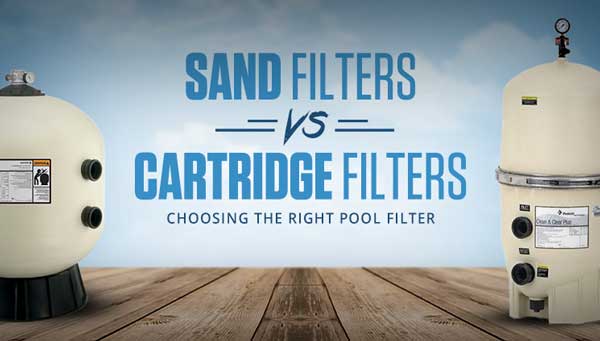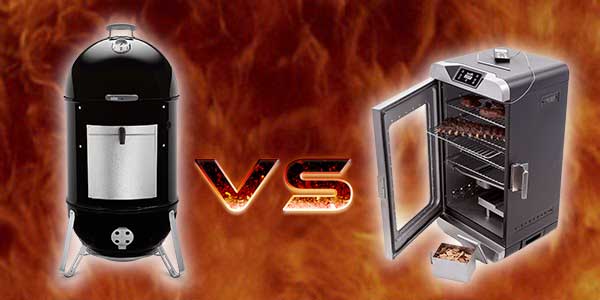Sand Filters vs Cartridge Filters: Head to Head Comparison
Many people think that a pool doesn’t need more than just a few drops of chemicals like chlorine to be ready for swimming. But that’s completely wrong.
Especially outdoor pools that are always exposed to exterior dust, dirt, debris, and other factors – it is crucial to have the right kind of filters. They act as a protector against stuff that could make the water look awful, but also unhealthy.
That’s why it is essential to have the right type of pool filter – either sand filters or cartridge filters.
We’re going over their differences and roles, as well as how they work and how long they will last. If you care to find out and learn more about each – then keep reading!
What Are Sand Filters?
Simplicity and affordability, that’s what sand filters provide.
They don’t need much installation and make the whole cleaning process easy. You can make them work either in-ground or above ground if required. You just need to hook up a pump so the filters can suck the water in.
They work by only using media that stops dirt & debris as soon as the water goes through. After the water passes through the mesh, then it goes out to the pool once again from the bottom of the filter.
It is a straightforward design that makes filtering pool water effortless. No rocket science at all, just let the water go through and trap the unwanted stuff in the middle.
Then, you can simply go and clean the filter by taking the media out and rinsing it. You will know when to do so because the water coming from the screen will diminish exponentially, which is a sign the media is filled with debris.
Sand filters are simple, effortless to install and take no more than a few minutes to replace or maintain. And what’s even more fantastic is that they are entirely cheap.
What Are Cartridge Filters?
These are a little more efficient than sand filters when it comes to trapping dirt, dust, and debris from the water. But they are complex.
A cartridge filter takes a lot of space to be installed but requires less pump power to work. The water will simply go through the cartridge and capture both large and small particles of dirt.
They filter out the water like no other option out there. But they demand constant changing and maintenance.
To clean them up, you just need to get the cartridge out and replace it with a new one. This usually occurs once the water coming out of the filter is very low.
Overall, they work straightforwardly and need little pump power, which ends up saving money in the long term. But at first, with the installation and the overall design, they are highly expensive.
Now, Let’s Look At The Differences Between Sand Filters And Cartridge Filters
Filtering Capacity
Let´s go a little deeper now by comparing how well the two filters work. This will let you know how much dirt and debris they can capture over time:
Sand Filter
Sand filters work really well with large pieces of debris and most dirt that passes through the media.
They won’t capture the smaller particles because the filtering mechanism is not as complicated as cartridge filters. But it will still work well enough to keep a small and medium-sized pool clean for several days.
Sand filters work like a gem in exterior in-ground pools. They keep most of the debris out very fast, and won’t let any fall back into the pool.
Cartridge Filter
A cartridge filter will get rid of twice the amount of debris and dirt than a sand filter. This happens because the cartridge doesn’t contain only one mesh but two or even three depending on the model.
Trapping small and large particles, a cartridge filter is often the best option for indoor pools where dust is more common than dirt and large debris.
In exterior pools, they also work really well. But the cartridge will fill out really fast which can be a problem for some.
Maintenance
Apart from how well they work, it can be pretty useful to know how much upkeep they will need. Here’s more about each:
Sand Filter
You may never need to do maintenance to a sand filter apart from replacing the mesh once it is too dirty and can’t be washed.
But overall, you just need to take the media out of the filter and backwash it. By simply grabbing a high-pressure hose or spout and placing the media backward will get rid of all the debris and dirt on the mesh.
After it looks and feels new again, then the filter can be placed on its job site again. They will last about 2 to 4 years working this way.
Cartridge Filter
The maintenance of a cartridge filter is as easy as with a sand filter. However, the process differs in that cartridges won’t have the same cleaning efficiency after the first clean.
This happens because cartridges have several parts that wear out over time. Then after the cleaning, most of the filtering properties wear out, so the cleaning efficiency lowers down to 60%.
Luckily, you can always have several cartridges so you can replace the dirty one for a new one and let the filtering work. Then just clean the dirty cartridge and store it.
A typical cartridge can last between 3 months to 1 year of use unless you don’t care about loss efficiency.
Durability
The durability of a filter depends heavily on the location of the pool and the surroundings. That’s why it is crucial to understand how each one works accordingly.
Sand Filter
The durability of a sand filter is set by how dirty it gets in the long run. So, for exterior places with large amounts of debris and dirt, one of these filters can last between 6 months up to 1 or 2 years.
In outdoor pools with less exposure to external factors, a sand filter can last up to 4 years without problems. You’ll just need to be regularly cleaning it to keep the filter working.
The problem is that sand filters are costly. So they are durable and work decently well, but they will cost a lot more than cartridges to replace.
Cartridge Filter
Then you meet cartridge filters. These are very effective at capturing any type of residue or dirt. But because they trap much more than sand filters, they last way less.
A cartridge filter in an outdoor area with tons of debris and dust will get dirty very fast. This demands a lot of maintenance over time but keeps the pool cleaner. A cartridge will last about 6 months in a highly exposed exterior pool.
As for indoor pools or places with less debris and dirt, a cartridge filter may last up to 2 years in the best-case scenario. But the effectiveness of capturing small particles of dust is simply unbeatable.
When it comes to replacing cartridges filters, you won’t have to spend much. But of course, you will have to replace them at least twice as often as a sand filter.
Bottom Line: Which One is Better?
So you went over the differences of each of these filters – then it is time to learn which one is for you.
Overall, we can say that a cartridge filter does the job way better when it comes to capturing dust, debris, and dirt. But a sand filter is a lot simpler to maintain, replace, and install.
So you’ll need to think both about how much maintenance you can do, as well as how clean you want the pool to be.
For example, if you have an exterior pool in a place with lots of dirt, debris, and dust around – then a cartridge filter will demand lots of maintenance. In this case, a simple sand filter that you won’t need to maintain that much would be better.
But for any other place where there’s not much debris, then you’ll find a cartridge filter to be a perfect choice. You won’t have to do too much upkeep, and it will capture lots of small particles without any drawback.
So, it all comes down to what you really need. Make sure to pick the one that best matches your requirements, and you’ll know you’ve got the right kind of pool filter for the job.
More Articles To Read:







